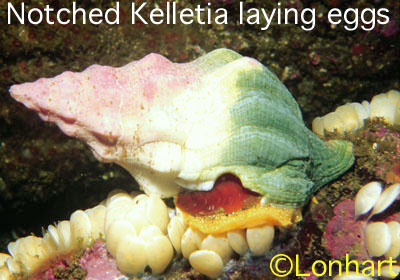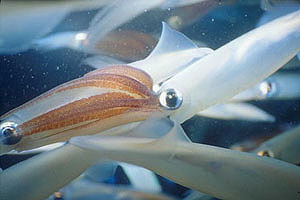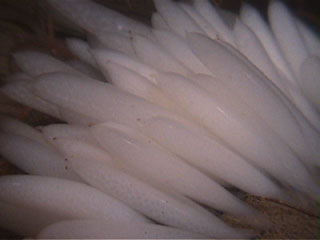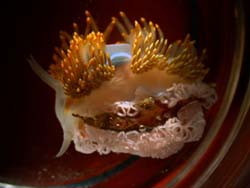
| MadSci Network: General Biology |
Dear Kristen,
Wow, your question is both fascinating and difficult -- fascinating because I love talking about invertebrates and reproduction, difficult because the mollusks have been particularly good at coming up with interesting ways to have sex, and I'm not sure I can do them justice.
Your question asks how the reproductive system in mollusks works. The answer to this question depends on which group you're interested in. I'll try to give you an overview on how some of the major groups of mollusks go about the business of having sex.
First of all, most mollusks are dioecious; that is, the male and female sexes are housed in separate bodies. The major exceptions to this rule of thumb are the opisthobranchs (sea slugs and allies) and pulmonates (the terrestrial snails and slugs), which have both male and female reproductive organs in the same body. I'll say more about these interesting exceptions in a bit.
Many of the gastropods (snails, abalones, limpets, etc.) and all of the bivalves (clams, mussels, scallops, etc.) are broadcast spawners. Each adult spews hundreds or thousands of gametes into the water, and fertilization and development occur in the water column with no parental care other than what went into the formation of the gametes themselves. This link will take you to a site that has information and photos of abalone spawning.
Other gastropods are more attentive parents. Instead of throwing their
gametes out into the currents, they copulate and lay eggs. This is a photo
of a female whelk laying a clutch of eggs:

Cephalopods are also copulators. Off the coast of California, where I
live, the market squid Loligo opalescens aggregate in orgies of
thousands of individuals. A male will use his photophores and
chromatophores to display to females; if a female is receptive, he will
embrace her and use a modified arm called a hectocotylus to insert a packet
of sperm into her mantle cavity. She then lays large yolky eggs in
finger-length bundles called "candles." Squids and octopuses are
semelparous animals -- they mate once, then die. Here are photos of
copulating L. opalescens (the male's arms are flushed red) and some
squid candles:


Now, about those hermaphrodites. The opisthobranchs are a group of
gastropods that includes the flamboyantly colored nudibranchs. These sea
slugs are simultaneous hermaphrodites, meaning that they function as male
and female at the same time. Many nudibranchs are also cannibals, so an
encounter with a conspecific can lead to either copulation or dinner. If
both parties survive the meeting, each slug will go its own way and lay a
ribbon of eggs. The animal in this picture is a common nudibranch on the
central California coast, and is in the process of laying:

The terrestrial slugs and snails are also simultaneous hermaphrodites, and the banana slugs are especially kinky. Not only do they undergo mutual copulation, but they also have a bizarre behavior called apophallation, where one of the mating pair chews off the penis of its (her? his?) partner. This doesn't happen all the time, but it occurs often enough for a graduate student to study it for her Ph.D. This is a link to her web page.
This is a lot of information, and I hope it answers your question. If
you want to learn more about molluscan reproduction, you should check out
an invertebrate zoology textbook. Two that I can recommend are:
Pearse and Buchsbaum, 1987. Living Invertebrates
Ruppert and Barnes, 1994. Invertebrate Zoology
Allison J. Gong
Mad Scientist
Try the links in the MadSci Library for more information on General Biology.